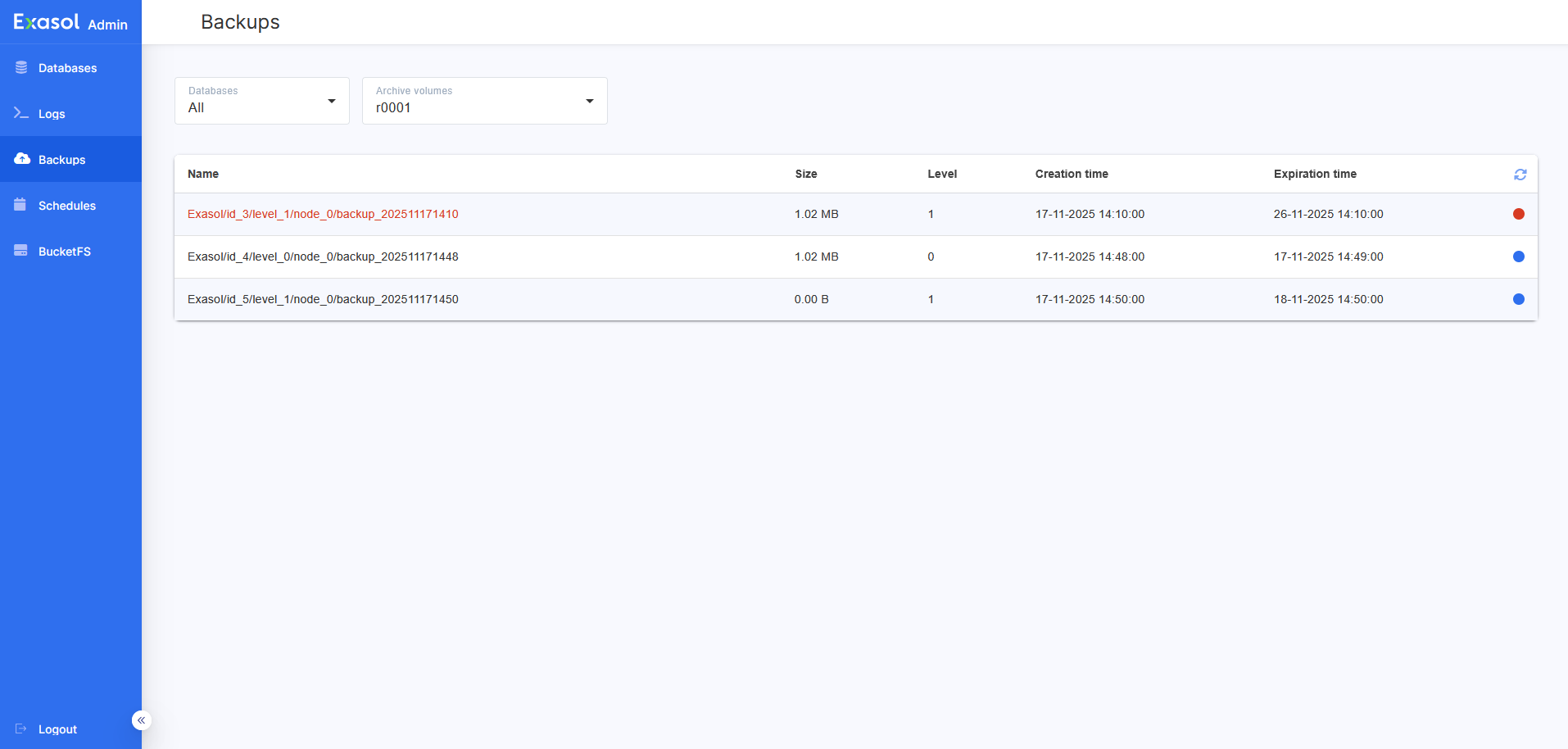List Backups
This article explains how to list all existing backups for a given database.
Prerequisites
There are no prerequisites for this procedure.
For Exasol 2025.1 and later, you can use Exasol Admin for this procedure. For earlier versions, you must use ConfD.
Procedure (Exasol Admin)
Log in to Exasol Admin and open the Backups page.
This page lists all backups on archive volumes associated with the databases in the cluster. You can choose to show all backups on a selected archive volume, or only the backups for a specific database.
Red text and a red filled circle indicate that the backup is not valid for the current database.
Procedure (command line)
This procedure uses the command-line tool confd_client, which is available on all database nodes. For more information, see ConfD.
Placeholder values are indicated with UPPERCASE characters. Replace the placeholders with your own values.
-
Connect to the cluster operating system (COS) using
c4 connect -i PLAY_ID -s cos.Example:
Copy./c4 connect -i c3275f84 -s cosTo find the play ID, you can use
c4 ps.For more information about how to use c4 commands, see How to use c4.
-
To find the database name when you are connected to COS, use the ConfD job db_list.
Example:
Copyconfd_client db_list
- MY_DATABASE -
To get information about all backups for the current database, use the ConfD job db_backup_list. For example:
Copyconfd_client db_backup_list db_name: MY_DATABASE
- bid: 1
comment: ''
dependencies: '-'
expire: 2024-06-20 12:08
expire_alterable: 10001 MY_DATABASE/id_1/level_0
expired: false
id: 10001 MY_DATABASE/id_1/level_0/node_0/backup_202406131208 MY_DATABASE
last_item: true
level: 0
path: MY_DATABASE/id_1/level_0/node_0/backup_202406131208
system: MY_DATABASE
timestamp: 2024-06-13 12:08
ts: '202406131208'
usable: true
usage: 0.011 GiB
volume: r0001List foreign databases
If the backup was taken from another database than the one you are currently connected to, it is said to have been taken on a foreign database. To list backups that were taken on foreign databases as well as backups taken on the current database, use the ConfD job db_backup_list with the
show_foreignparameter set toTrue.Copyconfd_client db_backup_list db_name: MY_DATABASE show_foreign: True

